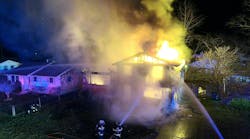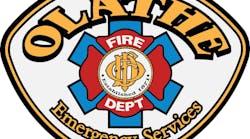Safe, efficient and effective emergency response services begin with proper staffing, adequate equipment and appropriate workplace facilities. But in the modern fire service, responder knowledge, skills and abilities, along with time-sensitive information, play important roles in the successful outcome of any incident.
Emergency response personnel must be educated and well trained to react quickly, but often they must also step up and lead their peers. In many professions, from education to electrical engineering, steady and continuous training helps professionals stay up-to-date on new technologies and innovations in the industry, allowing them to perform at the highest possible level.
A means for growth and learning
In the fire service, many departments are committed to providing advanced training and education, which is a critical step in making our communities safer and giving emergency personnel the stepping stones they need to be successful throughout their professional lives.
One of the best educational opportunities for fire service leaders is offered through the Commission for Professional Credentialing (CPC). The credentialing process develops highly trained emergency response personnel to serve as leaders on the fireground, as well as in the firehouse. Those who strive to ascend in the fire service must embrace education and personal growth, and the credentialing process offers opportunity for both.
From entry-level testing to promotional testing, firefighters and paramedics attend training programs and study for hours to prepare for the testing process. Officer promotions are essential to both helping individuals reach their professional goals, and to ensuring that fire departments have quality leaders in the communities they protect and serve.
CPC designations and the application process
I represent the International Association of Fire Fighters (IAFF) on the CPC. The CPC offers five designations: Fire Officer (FO), Chief Fire Officer (CFO), Chief EMS Officer (CEMSO), Chief Training Officer (CTO) and Fire Marshal (FM).
Achieving these designations requires the applicant to submit their professional experience through the designation process and meet specific requirements that are reviewed by the applicant’s professional peers.
Peer reviews can be intimidating; however, a full review of a firefighter’s educational achievements will better guide them toward personal success. The process is fair, honest and helps set personal and professional goals, which helps the applicant chart a successful career course.
The credentialing process overall is a great example of how labor and management can work together to develop high-quality fire service officers and leaders. Such a partnership rewards the public, the employer and the employee by developing leaders who are focused on delivering the most effective emergency services possible.
Opportunity = job satisfaction
Creating opportunities for upward mobility is vital to optimizing the future of our profession and is extremely healthy for a fire department. Why? It’s well known in the fire service that if employees don’t have opportunities to grow within their department, they move on to other organizations and often create attrition issues.
Developing leaders within an organization is also therefore a wise investment for municipal government, because it can yield positive returns for years to come. But firefighters and fire officers need the support of their employer for this to be truly successful.
Needed: a support structure
Employers must not only allow time for professional development, they must also support their employees with a financial investment in this process. Employees who are pursuing a designation have a lot on their plate. Work/life balance both on and off the job, combined with increased responsibilities in the firehouse, can be extremely time consuming.
Several collective bargaining agreements in the fire service have clauses that address educational incentives and financial support. Having this support in place gives employees the proper foundation to get started toward successfully completing the credentialing process.
A jewel in the crown
As noted, credentialing improves individual firefighter performance, but it also adds value to fire departments in the eyes of local officials facing difficult budget decisions. A fire department stocked with well-trained and effective fire officers, firefighters and paramedics can become a point of pride for communities—a jewel in the crown—and can help elected officials show the value to the community—and perhaps dissuade them from wielding the budget axe.
It is essential that decision makers commit to investing in human resources as much as in physical resources. Credentialing is a means to make that investment and ensure bountiful returns for years to come.
MATTHEW VINCI is the Director of Education, Training and Human Relations for the International Association of Fire Fighters, a position he has held since May of 2013. Prior to coming to the IAFF he served on the Executive Board of the Professional Fire Fighters of Vermont for 15 years, with 6 as the President where he successfully passed several pieces of legislation in the Vermont Legislature to increase the funding and resources for training and education of fire fighters in Vermont. Matt served as a Captain with the South Burlington (VT) Fire Department where he started his fire service career in 1993.






